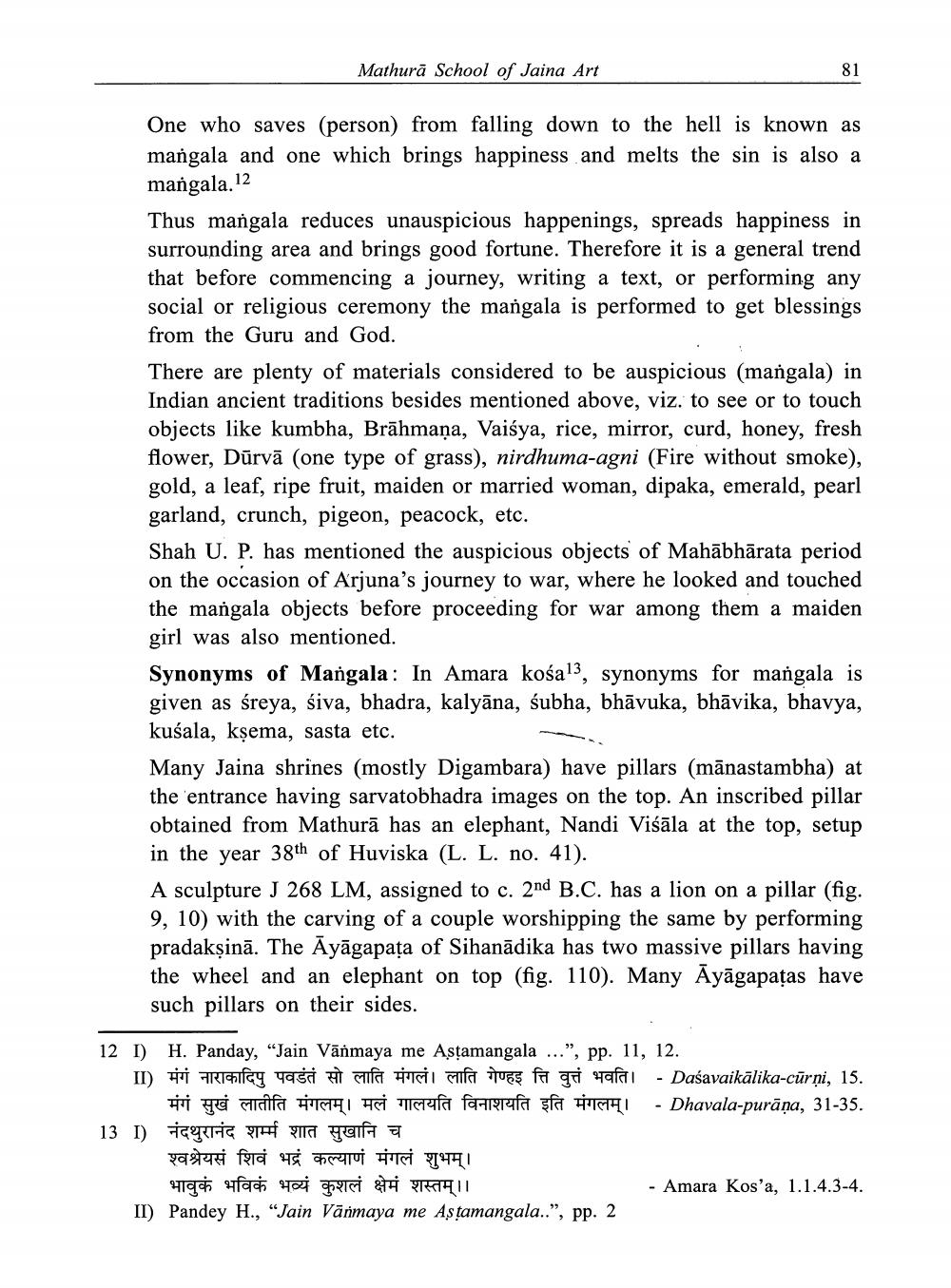________________
Mathură School of Jaina Art
One who saves (person) from falling down to the hell is known as mangala and one which brings happiness and melts the sin is also a mangala. 12
Thus mangala reduces unauspicious happenings, spreads happiness in surrounding area and brings good fortune. Therefore it is a general trend that before commencing a journey, writing a text, or performing any social or religious ceremony the mangala is performed to get blessings from the Guru and God. There are plenty of materials considered to be auspicious (mangala) in Indian ancient traditions besides mentioned above, viz. to see or to touch objects like kumbha, Brāhmana, Vaisya, rice, mirror, curd, honey, fresh flower, Dūrvā (one type of grass), nirdhuma-agni (Fire without smoke), gold, a leaf, ripe fruit, maiden or married woman, dipaka, emerald, pearl garland, crunch, pigeon, peacock, etc. Shah U. P. has mentioned the auspicious objects of Mahābhārata period on the occasion of Arjuna's journey to war, where he looked and touched the mangala objects before proceeding for war among them a maiden girl was also mentioned. Synonyms of Mangala : In Amara kośa13, synonyms for mangala is given as śreya, śiva, bhadra, kalyāna, subha, bhāvuka, bhāvika, bhavya, kusala, kşema, sasta etc. Many Jaina shrines (mostly Digambara) have pillars (mānastambha) at the entrance having sarvatobhadra images on the top. An inscribed pillar obtained from Mathurā has an elephant, Nandi Viśāla at the top, setup in the year 38th of Huviska (L. L. no. 41). A sculpture J 268 LM, assigned to c. 2nd B.C. has a lion on a pillar (fig. 9, 10) with the carving of a couple worshipping the same by performing pradaksinā. The Āyāgapata of Sihanādika has two massive pillars having the wheel and an elephant on top (fig. 110). Many Ayāgapatas have such pillars on their sides.
12 I) H. Panday, “Jain Vānmaya me Astamangala ...", pp. 11, 12 II) + Righly 4 cila il via us for yafeti - Daśavaikālika-cūrņi, 15.
Hi qe cialfa HIGH I HI istefa farfa fa i - Dhavala-purāna, 31-35. 13 I) Tric TH ya Taifa
श्वश्रेयसं शिवं भद्रं कल्याणं मंगलं शुभम्। भावुकं भविकं भव्यं कुशलं क्षेमं शस्तम्।।
- Amara Kos'a, 1.1.4.3-4. II) Pandey H., “Jain Vārmaya me Astamangala.", pp. 2




